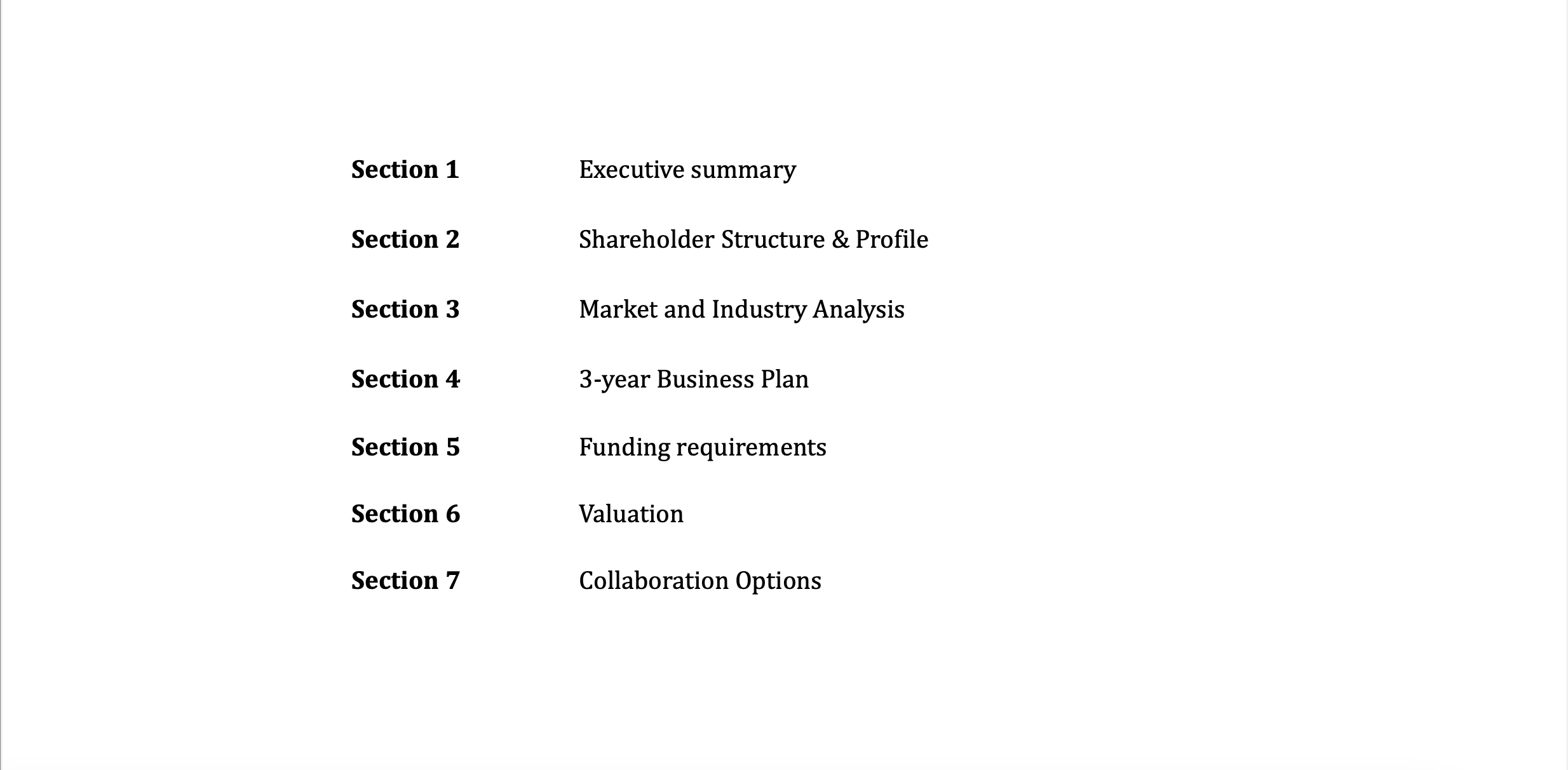1. Equity Offering Document
We have two versions to present to institutional investors.
a) Teaser Version: 4-8 pages. This version conceals the company name, logo, and names of the leadership team or board of directors.
- Highlights: A brief overview including:
Company background - Market characteristics (e.g., Vietnam’s unique features for FDI investors)
- Key financial performance indicators (revenue, EBITDA, gross margin)
- 3-4 key highlights of the business
- Company valuation, valuation method, and transaction structure (capital increase, partial exit, or complete buyout).
b) Full Version: 50-70 pages. This detailed version is provided after a non-disclosure agreement is signed.
In-depth Analysis: Extensive analysis of the industry, leadership team, shareholder structure, operational processes, and detailed financial analysis (including income statements, balance sheets, and cash flow statements) for recent years.
2. Due Diligence
a) Legal Review:
- Business licenses
- Shareholder structure
- Intellectual property
- Product-specific licenses or industry-specific permits (e.g., fire safety)
- Accounting, financial, and tax records.
b) Operational Review:
- Customer interviews
- Employee interviews
- Supplier interviews
- Attendance at management meetings
- On-site visits to warehouses, supply chains, and markets to observe company operations
c) Financial and Accounting Review:
- Audited financial statements for the past three years, often including internal records
- Financial forecasts and plans for the coming years
- Analysis and explanation of financial ratios and trends, including asset management, record-keeping, and cash management.
3. Valuation
We have several arguments to support our valuation methods for the pre-money valuation of the company.
Methods:
- Comparable Company Analysis: By comparing our company to similar companies in the same industry, we can determine an average or minimum valuation multiple.
- Discounted Cash Flow (DCF) Analysis: This method involves projecting future cash flows and discounting them back to their present value.
- EBITDA and Enterprise Value Multiples: These methods use multiples of EBITDA (Earnings Before Interest, Taxes, Depreciation, and Amortization) or Enterprise Value to determine the company’s value.
4. Transaction Structure
The company is considering the following options:
- Capital Increase: Issuing new shares to new investors to fund company growth. This includes determining the share price and the maximum percentage of ownership in this round.
- Secondary Share Sale: Selling existing shares owned by current shareholders.
- Majority Stake Sale: Selling a controlling interest (25%, 36%, 51%, 70%, or 100%).
- Investor Type: Financial investors or strategic investors from the same industry who can provide value in terms of supply chain or market access.
Many companies fail to raise capital due to inadequate preparation and a lack of understanding of the investment process. This leads to prolonged due diligence and negotiation periods.
It is also crucial to have a clear understanding of the legal implications of bringing in new investors, such as:
- Company Bylaws: How the company will be governed.
- Decision-Making Agreements: How decisions will be made by the board of directors and shareholders. For example, decisions affecting more than 36-51% of the company’s assets may require a board meeting to avoid potential losses for other shareholders.
It is essential to have a clear understanding of your needs and be well-prepared before seeking investment. Failure to do so can distract you from your business and prolong the fundraising process.


